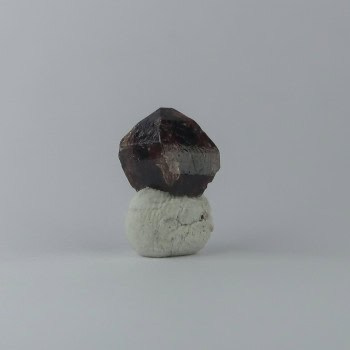Zircon
Zircon is a common mineral in igneous and metamorphic rocks, but larger crystals are quite rare – and typically, that is what collectors will be looking for. Larger pieces of good quality and colour can be considered a gemstone.
Zircon should not be confused with cubic zirconia.
Showing the single result
Information about Zircon
Appearance
It is used in industry, typically used as a refractory material or in ceramics – it is also used in nuclear fuel rods, and purification systems. It is also used to create pure zirconium.
Uses and History
It is used in industry, typically used as a refractory material or in ceramics – it is also used in nuclear fuel rods, and purification systems. It is also used to create pure zirconium.
Zircons are also used as a semi precious gemstone, in higher qualities.
It has been confused with rubies and spinels from time to time, although it is relatively easy to test with simple gemmological equipment.
Zircon appears to first be named in 1780 as zirkon, but older names from the 12th century are a possible origin of the name as ‘jargonce’.
Mineralogy
Hazards and Warnings
Can be radioactive, but isn’t always – and is quite minimal.
Mineral collectors should wash their hands after handling specimens, to avoid any exposure to potential toxins.
Almost all rocks, minerals (and, frankly, almost all other substances on earth) can produce toxic dust when cutting, which can cause serious respiratory conditions including silicosis. When cutting or polishing rocks, minerals, shells, etc, all work should be done wet to minimise the dust, and a suitable respirator or extraction system should be used.
Translations
Arabic:
Hindi:
- ज़िरकॉन
Portuguese:
- Zircão
Bengali:
- জিরকন
Indonesian:
Punjabi:
- ਜ਼ਿਰਕੋਨ
English:
- Zircon
Italian:
- Zircone
Russian:
- Циркон
French:
Japanese:
- ジルコン
Spanish:
- Circón
German:
- Zirkon
Korean:
- 지르콘
Thai:
- เซอร์คอน
Gujurati:
- ज़िरकॉन
Mandarin Chinese:
- 锆石
Urdu:
- زرکون

